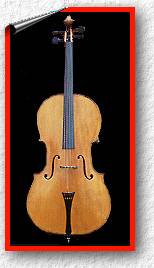The cello had, in the time, varied forms, and it delayed to impose itself as instrument of soloistic possibility.
The cello began its ascent in Italy in the XVII century; it was, and it is still, a virtuous instrument for its melodic harmony and composers as Haydin, Shumann, Dvoraks, wrote famous pages.
The earliest known makers of cellos, violas and violins were Andrea Amati (who died before 1580) of Cremona, Gasparo da Salo (1540-1609) of Brescia and his pupil Giovanni Paolo Maggini (1581-1632). Their cellos were larger than modern cellos (up to 80 cm in length), and survivers have been shortened.
The violoncello is an instrument with a very interesting and large background. A large part of cellos today are produced in factories.
However, the cellos are still today make individuals by hand, just as was done by Amati, Stradivari, and the other old master makers.
Advancing cello students usually try to buy one of these fine hand-made cellos as they become more proficient, and need a better sounding instrument.

CELLO